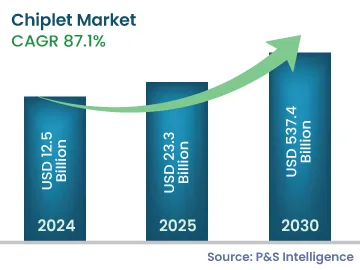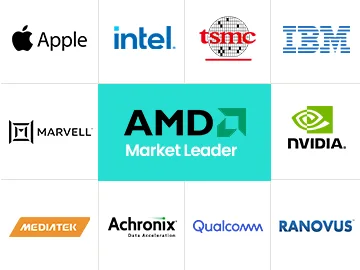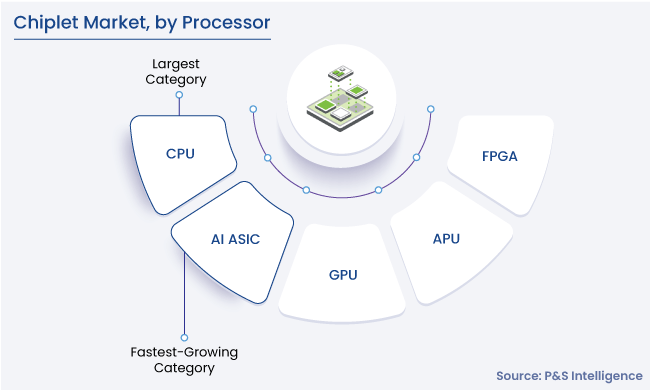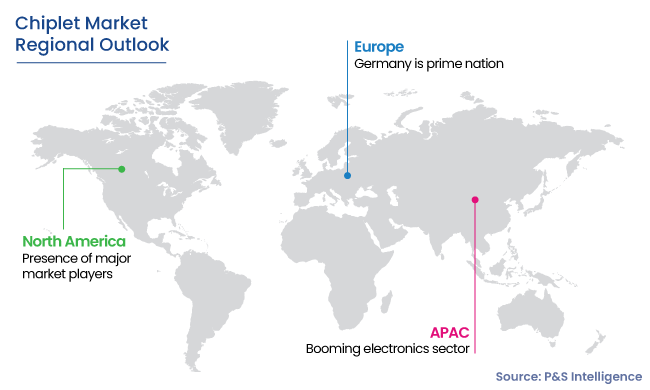Chiplet Market Analysis
The global chiplet market is estimated to have val .ued at USD 12.5 billion in 2024, and the market size is predicted to reach USD 537.4 billion by 2030, advancing at a CAGR of 87.1% during 2024–2030. The key factors driving the growth of the market are the rising usage of artificial intelligence and IoT, increasing degree of miniaturization in electronic devices, and surging demand for data processing and storage. Moreover, the increasing adoption of high-performance computing (HPC) servers in various industries, along with the adoption of advanced packaging technologies, is propelling the growth of the market.
Monolithic chips are not the optimal approach for the implementation of mixed-signal IoT devices. The alternative approach is the use of chiplets, which allow multiple chiplets with different process node sizes to be used in a single package or on a single substrate. This architecture brings a host of benefits to IoT product developers over the SoC approach, such as lower production cost, lower supply risk for OEMs, and reduced investment cost.
The demand for heterogeneous integrations contributes significantly to the rising demand for chiplet, as heterogeneous integrations allow for the creation of specialized chiplet designated for specific tasks. They can be optimized for particular functions, such as AI acceleration, single processing, and memory, leading to enhanced performance and energy efficiency. This specialization meets the growing demands for various applications from AI and edge computing to 5G and IoT. Moreover, by integrating diverse chiplets, manufacturers can achieve a significant performance boost.



